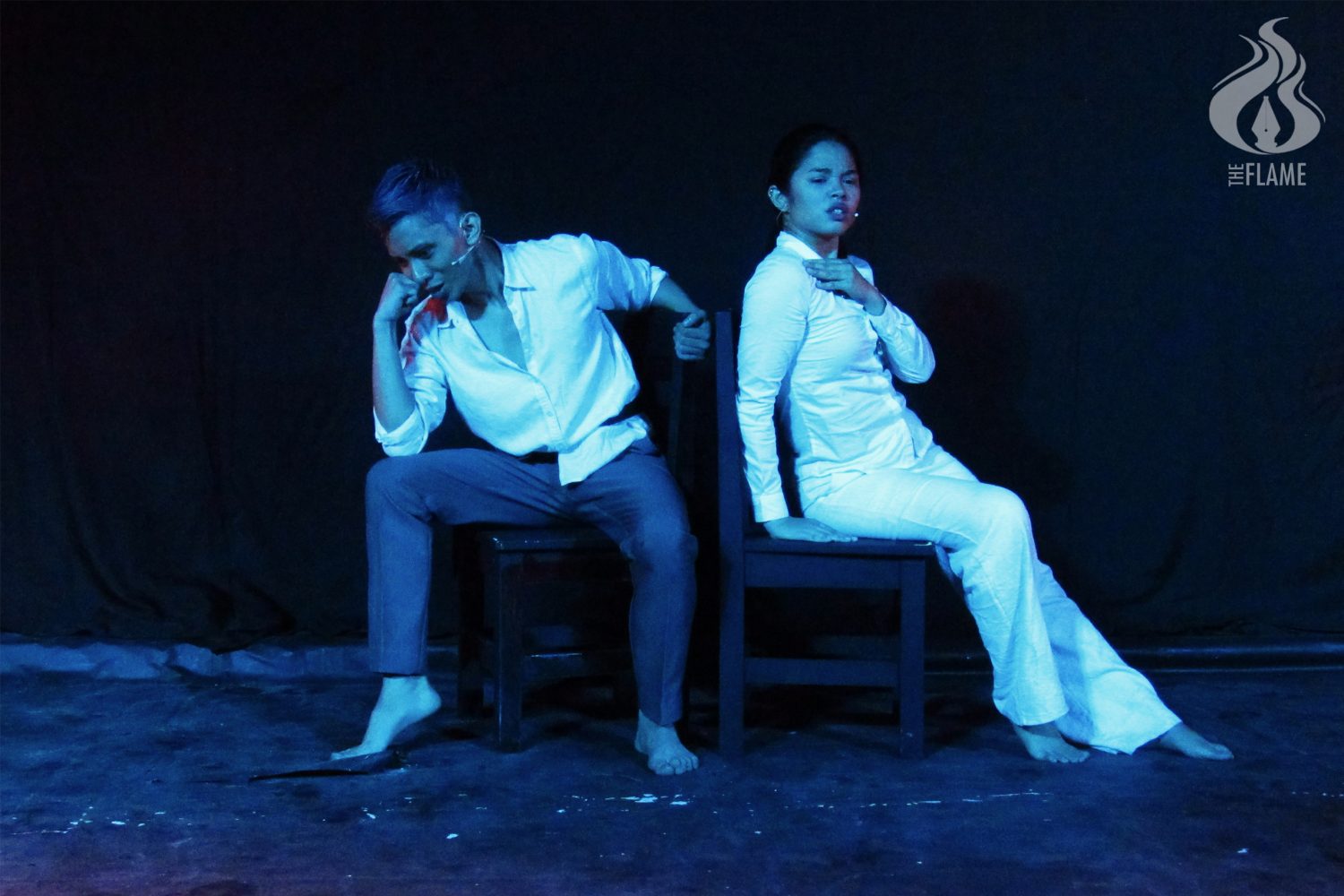By PATRICK V. MIGUEL
LOVE IS not caged inside a box; once it is confined, all of its ambiguity and subjectiveness will disappear. It can be seen in many ways but it will always depend on the person to interpret it as an act of love. People often see love from attention, affection, and vulnerability. However, the presence of love is not only limited to these acts.
In celebrating their 42nd year in theater, Teatro Tomasino showcases their talents through the production Baka Sakali ㅡ a double-bill play featuring Habulan Sa Pagitan ng mga Maliliit na Kamay ni Kamatayan and Kublihan. Behind hope and risks, the play challenges circumstances that makes people wonder about what-ifs.

Habulan sa Pagitan ng mga Maliliit na Kamay ni Kamatayan
Directed by Patrick Demition and written by Jay Crisostomo IV, the play dealt with the concept of destiny and fate. It follows the story of Rafael Alvarez (Eudes Garcia) and Maria S. Moreno (Sophia Miel Ligutom) as they deal with being kept apart from each other despite their intense and passionate desire.
It first opens with a scene featuring Maria and Rafael expressing their love to one another. Both of them find it challenging to be together as Maria is Rafael’s superior. The former rejects the latter, leaving him devastated enough to kill himself. His death brings forth a series of events that give off the idea of reliving past lives in different times. In the ill-fated couple’s reincarnations, different circumstances such as nature, politics, distance, sacrifice, and concealment separated them.
One thing commendable with the lead actors was their portrayal of various roles and emotions during the quick transition of the play, which challenged their versatility as actors. An attestation to this was their depiction of a butterfly and princess in one scene which transitioned into being scared and mentally disturbed characters in the next. In addition, what also made their characters entertaining was their interactive format, which called for the audience to participate in the play by having them act as an intermediary between the characters’ messages to one another.
However, there are flaws that could be found in the play. One of the most noticeable was the music; most of it did not match the mood of the specific scene. There was also room for improvement regarding the location of the lighting ㅡit blinded the audience because it was set in the left and right upstage.
Above all, Habulan sa Pagitan ng mga Maliliit na Kamay ni Kamatayan sends the message that love transcends time. But if two people who love each other strongly deal with inevitable conflicts, then the only place where they can be together in peace is after death.

Kublihan
Kublihan is a one-act play ㅡ directed by Eudes Garcia and written by Jerome Ignacio ㅡ which tells the story of Julio (Shingie Taira), a graduating student, and Jerome (Andrew Santos), a freshman. Set in a hideaway hangout place, the two deal with the concept of acceptance by addressing issues like suicide, peer-pressure, bullying, and hidden romantic feelings. The play tackled serious issues, but it still used a comedic-vibe to lighten the mood.
The second bill started with Julio finding Jerome writing by himself. As their story progresses, their depth and character are revealed through details in their dialogue: Julio, being an achiever in school, suffers from the pressure his family gives him, while Jerome, a wallflower, endures his everyday life as a victim of bullying. They were challenged to accept each other’s feelings and differences from the society by how they were treated.
Santos’ and Taira’s acting showcased their intimate familiarity and knowledge about the respective characters they played. Furthermore, their intimacy with each other was played well as they projected the appropriate and authentic emotions to each line they delivered.
The blockings that were observed in the beginning throughout the ending maximized the space of their stage. In setting the mood and time, the color orange was well used in the lighting as it represented the sunset. However, one such problematic part in the production was a scene where the characters were throwing leaves toward the audience; it holds the possibility of being misinterpreted as some form of disrespect.
Kublihan portrays love as taking one’s heart completely. It can be found once imperfections and differences are embraced; may it be in friendship, family, and relationship. There is also the value of accepting fate, and accepting the love given by others.
Overall, both plays did not spoon-feed the audiences. The playwrights entrusted their work to the intellect of the audience. Instead of giving out objective dialogues, they made it more open-ended for the audience’s interpretation by using lines and concepts that are ambiguous.
Love, as portrayed in Baka Sakali, defies time and precedes acceptance to one another. The play shows that it does not end in one lifetime and it has no limit. There is no superiority in love; it recognizes no gender because it is universal. F



